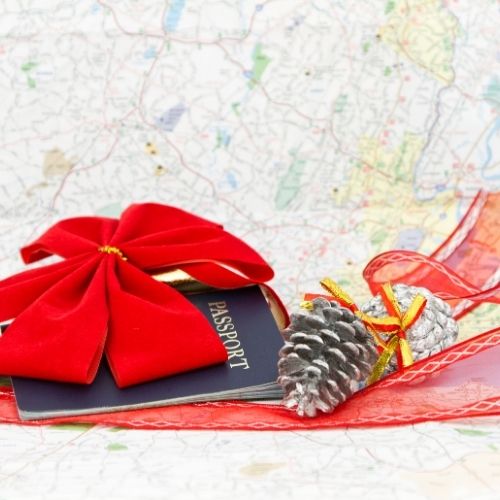With the holidays in full swing, we wanted to provide you with some quick reminders – especially if you plan to travel over the break.
How to Prevent Frostbite
Being outdoors during winter months can expose you to cold weather conditions. Exposure to frigid temperatures can lead to various health complications—including frostbite. Frostbite is a cold-weather injury caused by a freezing of the skin and its underlying tissues. This condition most commonly occurs on the fingers, toes, nose, ears, cheeks and chin. Skin exposed to cold, windy weather below 5 degrees Fahrenheit is most susceptible to frostbite. What’s more, in a wind chill of minus 16.6, frostbite can occur on exposed skin in as little as 30 minutes.
Recognizing the symptoms of frostbite is important in order to help prevent it. Here are common symptoms associated with frostbite:
- Cold skin accompanied with a prickling feeling
- Numbness
- Red, white, bluish-white or grayish-yellow skin
- Hard or waxy-looking skin
- Clumsiness due to joint and muscle stiffness
- Blistering after rewarming, in severe cases
Long-term complications can arise from frostbite as well—such as increased sensitivity to cold, prolonged numbness in the affected area, changes in skin color and an increased risk of developing frostbite again.
To stay warm in the winter weather and decrease your risk of experiencing frostbite, follow these tips:
- Dress appropriately—Wearing loose, light and comfortable layers can help trap warm air.
- Protect your hands and feet—Wear two pairs of socks, and insulated gloves or mittens to keep your hands and feet warm.
- Keep your head warm—Wear a heavy wool or fleece hat that fully covers your head and ears.
- Stay hydrated—Dehydration increases your risk of developing frostbite. Even if you aren’t thirsty, try to drink at least one cup of water before entering cold temperatures.
Defensive Driving Tips
Although getting behind the wheel may seem like a simple, everyday task, it could be one of the most dangerous things you do all day long. As a defensive driver, you can help avoid motorized crashes and lower your risk of costly insurance claims.
By utilizing defensive driving measures, you can help keep yourself and other motorists safe on the road. Next time you get behind the wheel, implement these tips:
- Eliminate distractions—Your sole focus should be the road. Avoid using your cellphone, adjusting the radio, eating and drinking behind the wheel.
- Follow the rules of the road—Uphold standard protocols such as wearing a seat belt, obeying speed limits, using turn signals and approaching intersections with caution.
- Remain alert—Check your mirrors often, and try to scan road conditions up to 30 seconds ahead of you.
- Don’t depend on other drivers—Never assume another driver is going to move out of the way or allow you to merge. Plan your movements to anticipate the worst-case scenario.
Candle Safety Considerations
When the weather gets cold, you may want to cozy up indoors by lighting a candle or two. However, it’s important to keep candle safety considerations in mind when doing so.
All it takes is a single candle mishap to quickly escalate into a devastating fire within your home. In fact, the National Fire Protection Association claims that there is an average of 21 home fires caused by candles every day—with 85% of them being avoidable.
Candle incidents can be avoided by practicing safe candle usage within your home. Learn to use candles safely in your home by following these simple tips:
- Trim the wick—Trim the wick to a quarter of an inch to keep the flame from becoming too large.
- Use a long match or lighter—To keep your hand from getting too close to the flame, always use a long match or long lighter.
- Don’t walk away—Make sure the wick ember is completely out and no longer glowing before leaving the room.
- Secure the area—Never burn a candle near anything that could catch fire. This includes furniture, drapes, bedding, carpets, books, paper and flammable decorations.
- Keep candles away from kids and pets—Make sure children and pets cannot reach burning candles.
- Avoid drafts, vents and air currents—This will help prevent rapid burning or dripping of your candle.
- Burn for no longer than four hours—Burning your candle for more than four consecutive hours can cause the wick to become unstable and the flame to grow too large.
- Extinguish candles appropriately—Suffocate the flame by using a snuffer or putting the lid on the candle to prevent hot wax splatters.
- Don’t touch or move it—Make sure the candle is completely cooled before touching or moving it.
For more home safety guidance and homeowners insurance solutions, contact Bates Hewett & Floyd Insurance Agency today.

